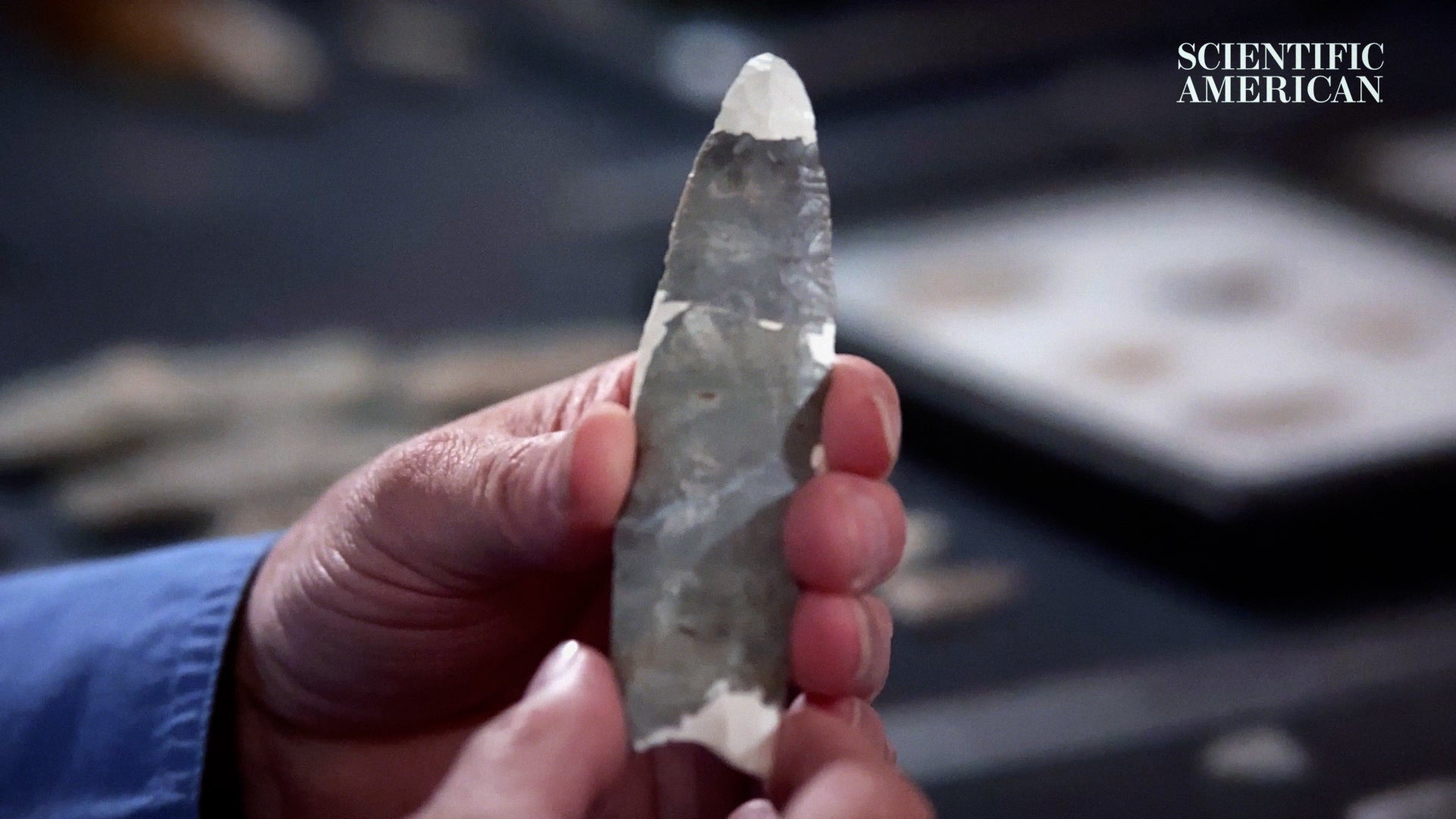
TRANSCRIPT
Brendan Nash: So this is the sub-plow sediment from unit 133, and anything in here will have will be undisturbed for about 13,000 years. Really looking for the smallest flakes. And then you’ve got to get your face in there real good because these things are tiny. We have here represents a biface refurbishment flake. Generally what’s happening is people are bringing their hunting weapons out here after they’ve been used and they’re refurbishing them for another round of hunting.
Tom Talbot: This is a flake fragment of Attica Chert. That is exactly what we’re looking for. I became aware of the site back probably in the mid seventies as I was surveying the and identifying sites around this large glacial marsh and the Belson site sits on the north side of that marsh. I’d walked into the field and found this this bottom section.
I knew exactly what it was. I got right back in the truck and came home. And this time… The first Clovis point turned up in 2006. And I picked it up. I identified it. It’s laying there for, you know, 13,000 years.
First, I thought it was kind of a fluke because Clovis was never discovered here in Michigan before. The theory is Clovis wouldn’t be found here because by the time that fluted point technology reached the Great Lakes Basin, it had morphed into a different style. You opened up the site and we’re very pleased at what we’ve found. The big question was underneath the plow zone, in the subsoil, was there undisturbed Clovis material?
And yeah, we’re recording a whole layer of Clovis material that’s undisturbed. It’s laying there for, you know, 13,000 years.
Nash: So what we’re doing is mapping each one of these, and we find it in the ground, creating a data map of exactly where all these little pieces of debris fell. And hopefully we can start to understand how people were using their space.
Talbot: 7.8 in length. We think we’re pinpointing places where they were carving up game, we’re pinpointing places where they were scraping hides, pinpointed places where they were resharpening their tools or making tools with some of the larger flakes. All those little details indicate different, different things that were going on on the site. Clovis People were constantly traveling. They were constantly following the herds.
Probably twice a year they were harvesting migratory animals. Whether it would be large megafauna like the wooly mammoth or mastodon. More probable would be caribou.
Henry Wright: For some time I actually worked on the drawings, so the original drawings are right here. Clovis is normally considered to be a plains way of life. Did these guys come off the plains as, like Clovis bison hunters, and they then switch readapt to shatter the hunting of the caribou?
Or did they realize that they were moving to the environment and immediately engage in a different kind of technological and social organization and oh, well, see, we have a lot of work to do yet.
Talbot: I think the most important thing is it shows Clovis had actually traveled this far north up into the Great Lakes, basically both sides. You know, Clovis has been studied in in the southwest and in the southeast extensively.
But to find him here in Michigan is is really an extraordinary thing.
